-
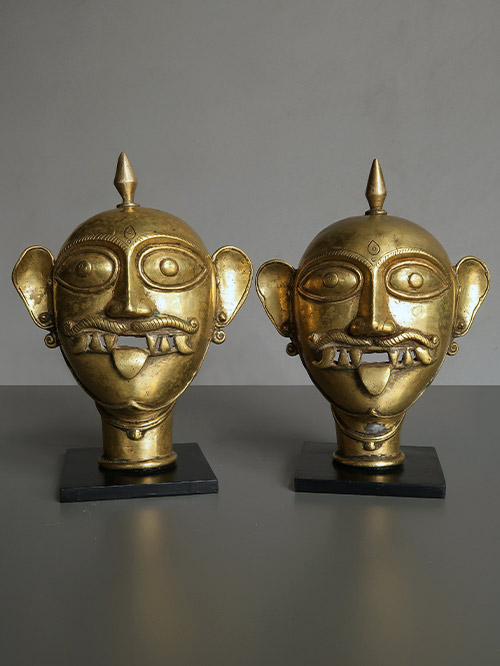

Karnataka
brass alloy
A beautiful pair of brass cast Bhairava heads also know as a ‘Demon Scarers’. Both visages are moustachioed with vicious gaping mouths with large teeth, fangs and protruding tongues. The heads have a rounded tubular extension at their base, which would fit over a pole and could be carried above the heads of the populace during festivals and processions.
Such monster figures and monster masks depict a demonic form of Bhairava, one of the avatars of Shiva. Some masks exhibited a distinct animal-like visage with huge teeth and a gigantic mouth. Those were often referred to as ‘tiger masks’. Some masks assumed the expression of a gargoyle with huge, bulging cheeks. Others incorporated composite features including tusks, bossing of the skull and occasionally the horns of a ram.
Protective deities such as viras (deified heroes), kshetrapalas (guardians), bhutas (spirits of various deities), including some daivas (devils) were expected to provide protection against invaders, thieves, the elements- fire , storms, floods, drought, disease etc. Since the earth was populated by gods and their counterparts in the nether world, demons, evil spirits and ghosts, prayers, offerings and sacrifices were made to both groups to propitiate them.
Size (cms): 29(H) x 23(W) x 15(D) each
Size (inches): 11.5(H) x 9(W) x 6(D) each
-
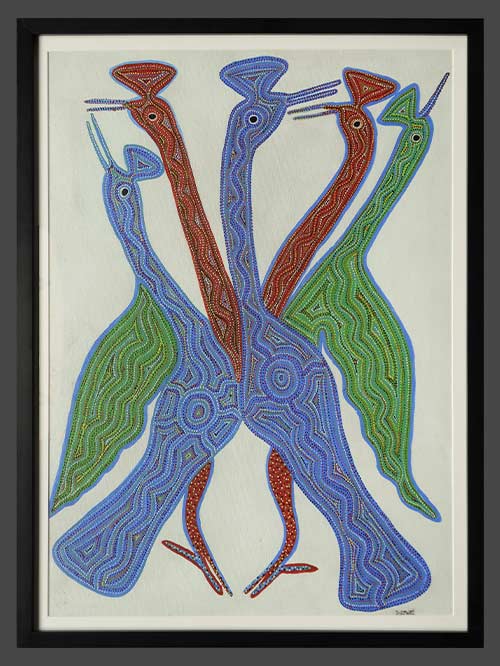
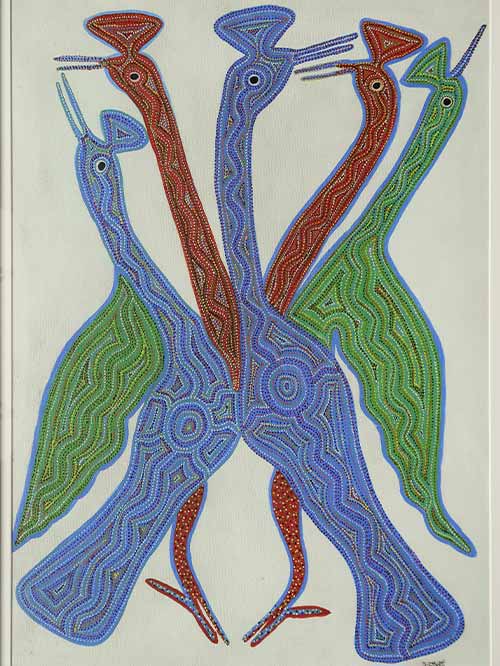
Bhil Tribes (Central India)
by Bhuri Bai
watercolour on canvas
Bhuri Bai grew up in the Jhabua district on the Madhya Pradesh-Gujarat border. J Swaminathan identified her as a potential artist nearly three decades ago, when she was a 20-year-old daily wage labourer. She picks up clues from the arts of embroidery as well as ritual narratives; her images shuttle between the intimate and the cosmic. This is especially evident in paintings where she depicts stags whose antlers grow into forests, their bodies distinctively patterned after desert dunes or river wavelets. She returns, often, to variations on the Tree of Life motif, playfully annotating its mythic presence with owls that stand on stilt-legs, timid snakes, and high-spirited elephants. Bhuri Bai demonstrates a lively and witty eye for observed detail, veining her observations with allegorical or parabolic intent.
Painting Size (cms): 74(H) x 54(W)
Painting Size (inches): 29(H) x 21.5(W)
Framed Size (cms): 79(H) x 59(W)
Framed Size (inches): 31(H) x 23(W)
-
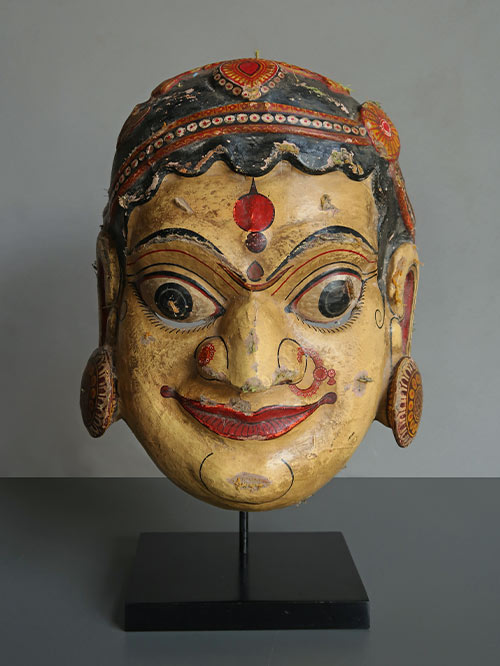
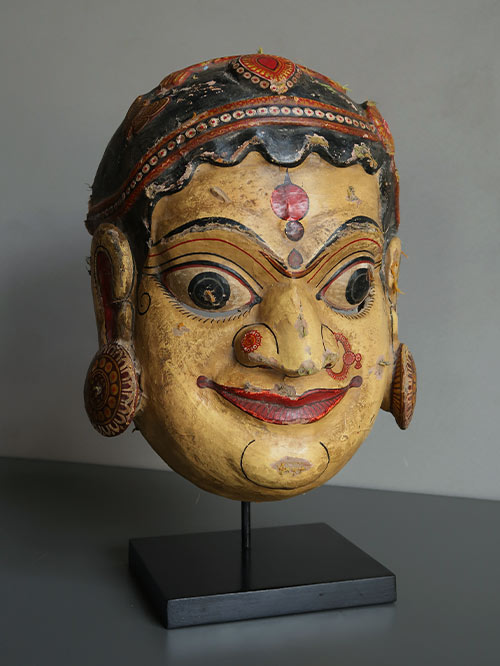
Orissa
Wood, extensively polychromed
This delicately painted and unusual dancing mask depicts Sita the consort of Lord Rama. Sita wear large kundala earrings and various nose and an unusual butterfly shaped hair ornament. A prominent tilaka adorns her forehead. Elongated slits have been cut out under her piercing eyes to help the dancer navigate while wearing the mask. This mask would have been used during folk performances of the Ramalila in Orissa.
The Ramalila (folk re-enactment of the life of Rama) is a widespread type of popular performance. The genre encompasses various dramatic enactments of the story of Rama by non-professional actors, men playing women’s roles, common throughout north India, ranging in duration from ten to thirty-one nights, concluding on the autumn holiday of Dussehra. In Orissa in particular, Ramalila is performed during the two weeks following Rama’s birthday, Ramanavami, in March or April, a time that makes sense for an enactment that begins with Rama’s birthday, on Ramanavami. This timing also coincides with the agricultural cycle, making the performance a celebration of the spring harvest. Also it is pleasant at the beginning of intense summer heat for villagers to enjoy the cool night hours with performances, generally from midnight till dawn, while actors and audience are free to sleep in the daytime.
Size with stand (cms): 40(H) x 27(W) x 22(D)
Size with stand (inches): 15.5(H) x 10.5(W) x 8.5(D)







